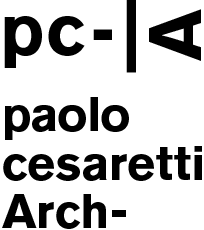-
Boutique Hotel on the Tremiti Islands, ItalyAt Punta del Diavolo, geography imposes itself with raw finality. Here, the San Domino Lighthouse transforms from mere architecture into an event – an intervention that negotiates between the elemental and the cultural, the natural and the artificial.
This project begins with constraints: a low, modest structure locked within the boundaries of its original form. Yet, these limitations become generative. The design operates not by erasure but by amplification, turning every challenge into an asset. The ceiling’s curves reframe the height restrictions, softening boundaries between horizontal and vertical planes while drawing the eye outward – to the infinite horizon that ultimately defines the space.
The material palette is deliberately contextual yet assertive. Rough plaster recalls the rugged rock face, while blue-grey tones echo the surrounding sea and sky. Nautical reds and industrial metals introduce a functional aesthetic that resists nostalgia, grounding the project in the present while acknowledging its maritime heritage. These elements are not merely decorative but narrative, situating the building within its layered identity as both a beacon and a retreat.
Inside, the spatial program disrupts traditional binaries. Public and private, individual and collective spaces coexist, encouraging new modes of interaction. The rooftop terrace, with its adjustable pergolas, collapses the distinction between inside and outside, offering a fluid experience of place. The infinity pool and Trani stone paving create moments where the artificial amplifies the natural, rendering the landscape more vivid.
This is not a neutral design. It asserts itself as a critique of conventional hospitality – privileging intimacy, contemplation, and the spectacle of time. Guests are participants in an architecture that orchestrates light, material, and memory, choreographing their engagement with the lighthouse as both an object and an experience.
San Domino Lighthouse is not a resolution but a provocation. It invites questions about the intersections of tourism, sustainability, and design.
–
Client/
Floatel GmbH
Creative Direction/
Paolo Cesaretti
Design Team/
Paolo Cesaretti, Marilde Bianco, Gabriela Vasileva
Place/
Tremiti Islands, Italy
Area/
450 Sqm















